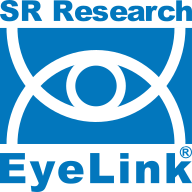A repeated measures analysis (Bayesian or otherwise) with dependent measurements
Hi JASP experts,
This is a general question about assumptions that, I think, is applicable to both Bayesian and traditional repeated measures ANOVAs.
@Cherie and I have eye-movement data of participants searching through a set of books. I'll simplify the design a bit for the sake of the discussion, but we can provide the actual data if that's useful.
There are two book categories, A and B. For each trial we have quantified the gaze duration on each of the categories, giving two measures per trial. These measures are dependent, because if they look at A then they cannot look at B. In other words, high gaze durations for A are predictive (though not perfectly) of low gaze durations for B, and vice versa.
Then we have an experimental condition with two levels, X and Y. We're interested in whether this condition affects gaze duration, such that participants look more at A in condition X and more at B in condition Y.
An intuitive appealing way to analyze this is with a repeated measures, in which we treat book category as a factor, so we have a 2 (book category: A, B) × 2 (condition: X, Y) design with gaze duration as dependent measure. And then we'd be interested in the book category × condition interaction (not in the main effects of book category or condition).
Now here's where things get tricky.
- I'm pretty sure that it's ok to look at the main effect of condition on gaze duration, because X and Y are independent.
- I suspect that it's problematic to look at the main effect of book category on gaze duration, because A and B are not independent. But I'm not 100% sure about this.
- And what about the book category × condition interaction. Is that valid? And if not, how would we ideally analyze a dataset like this?
I find it hard to wrap my head around this issue, so I really hope that someone can shed some light on this for us!
Sebastiaan




Comments
How dependent are A and B?
If they are completely dependent (say 100% gaze = GazeA + GazeB), than no need to put both measurements into the model - the intercept will give an indication for both, the main effect for condition (X/Y) will actually be the interaction, with the conditional means in X and Y the effect of A vs. B.
You can also convert your measurements to that this ^ is true:
DV = GazeA / (GazeA + GazeB)
Hi MSB,
Thanks for your reply. 😄
The gaze durations on A and B are somewhat dependent, but not perfectly. (If they were, we could indeed recode it without losing data.) Basically, there are three possibilities:
And the measures that we have are proportional gaze durations for A and B across a trial, which are generally values in the 0.1 to 0.3 range.
So to restate the main question: Given this scenario, is it acceptable to treat this as a 2 (book category: A, B) × 2 (condition: X, Y) design with gaze duration as dependent measure?
Cheers!
Sebastiaan
Check out SigmundAI.eu for our OpenSesame AI assistant!
Hmmm... Given your data and design, probably the most correct analysis would be a multinomial logistic regression...
But let's stick to an ANOVA-like design.
It seems %A and %B are dependent (negatively). You can deal with this dependance in two ways:
This would mean you use a liner-mixed model with a random intercept by trial (accounting for the differences between trials in %neither-A-nor-B), and a random slope for Book by trial (accounting for the negative dependence within each trial).
In a
lme4type formula, your model would look like this:percent_looking ~ Book * Condition + (1 + Book | Trial) + (1 + ... | Subject)(
(...| Subject)indicating any within-subject effects)Hi MSB,
Thanks for this. That makes sense.
Our design is actually a little more complicated than what I described here, in the sense that there are four book categories, and four conditions. Does that make any difference for your proposed approach?
Cheers!
Sebastiaan
Check out SigmundAI.eu for our OpenSesame AI assistant!
I don't think this should matter.
But, upon further reflection, the
lme4formula should be:to account for the fact the trials are nested in subjects (and a random book effect per subject)
or, if you suspect there may be any random effect for trials across subjects:
percent_looking ~ Book * Condition + (1 + Book | Trial:Subject) + (1 | Trial) + (1 + Book + ... | Subject)Good luck!
> to account for the fact the trials are nested in subjects (and a random book effect per subject)
Right, I was thinking about that too, but I was unsure how to indicate that.
Thanks for all your help!
Check out SigmundAI.eu for our OpenSesame AI assistant!
interesting problem!